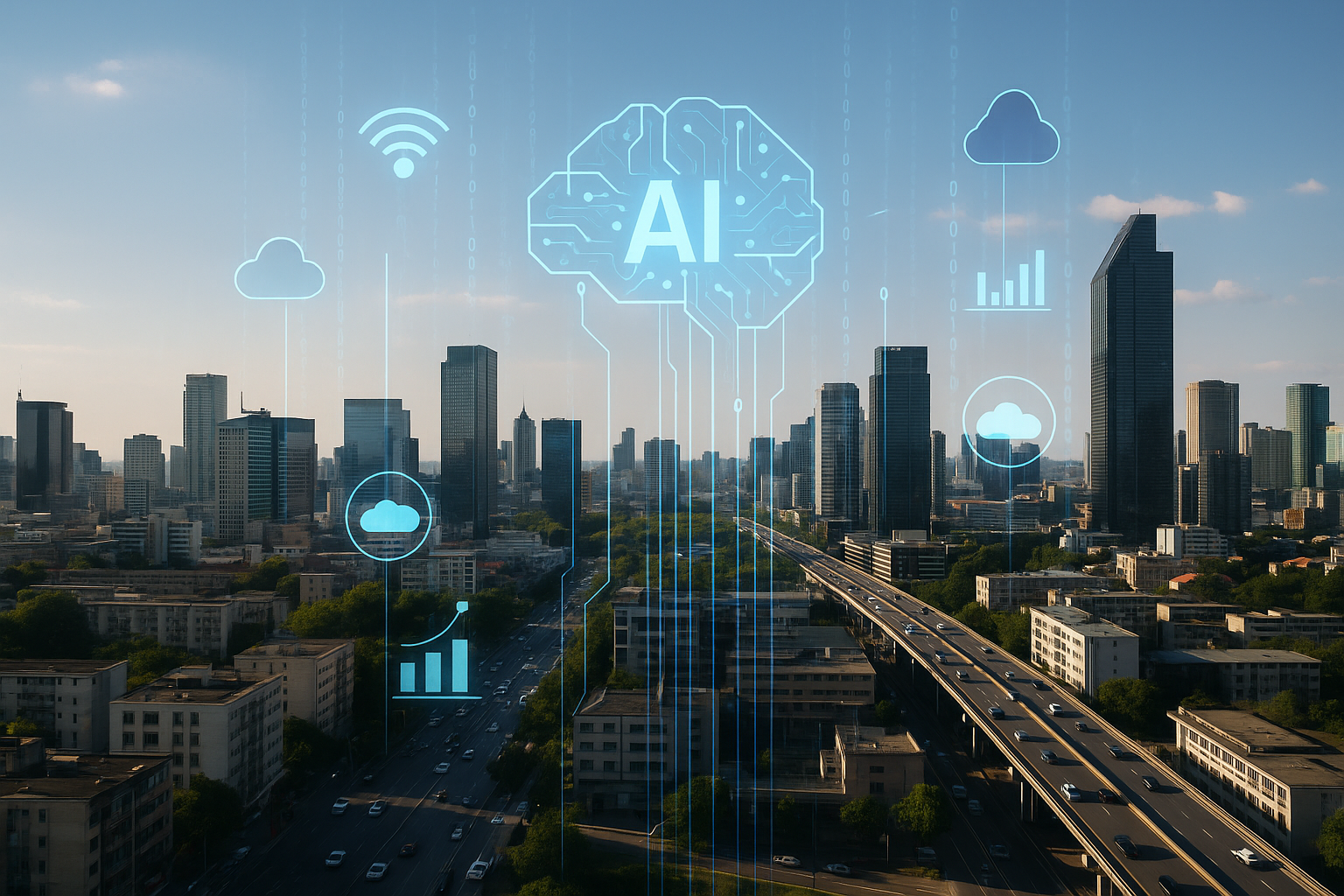AI-driven cities on the rise: Ethical and data integration challenges ahead
In transport, deep learning models are being used for traffic prediction and autonomous mobility networks. In environmental design, AI optimizes land use, monitors air quality, and manages energy distribution. Public health applications include spatial disease mapping and predictive analytics for emergency planning. Together, these uses mark a transition from isolated technical experiments to integrated urban intelligence systems.

Artificial intelligence (AI) is rapidly becoming a key tool in transforming the way planners model, design, and manage urban environments. A recent study, titled "Artificial Intelligence in Urban Planning: A Bibliometric Analysis and Hotspot Prediction," published in Land, provides the most comprehensive examination yet of how AI-driven technologies are transforming urban planning research worldwide.
Based on nearly four decades of data, the study identifies leading contributors, emerging application areas, and the next big breakthroughs that could redefine how cities grow and adapt.
Mapping four decades of AI in urban planning
The research analyzed 3,877 publications from the Web of Science database, covering the years 1984 to 2025. Using the bibliometric tool CiteSpace, the authors mapped how AI research in urban planning has evolved, pinpointing growth phases and shifts in focus. Three major stages emerged: a budding phase between 1984 and 2017 marked by experimental uses of early algorithms; a rapid growth phase from 2017 to 2023 fueled by advances in big data and machine learning; and a boom phase beginning in 2023, when generative and multimodal models entered mainstream research.
The authors found that China leads the global output with 878 papers, followed by the United States and India. Wuhan University and the Chinese Academy of Sciences ranked highest among research institutions, while strong collaborations have formed between Asian countries, particularly between China and Japan. When normalized by population and research investment, the United Kingdom, Saudi Arabia, and South Korea showed exceptional efficiency in producing influential work. Individually, researchers such as Filip Biljecki, Muhammad Adnan Khan, and Jong Hyuk Park emerged as prolific contributors shaping the international landscape.
This analysis shows that AI's integration into urban planning has moved far beyond technical modeling. It now plays a central role in climate adaptation, smart infrastructure, energy efficiency, and urban mobility, all tied to sustainable development goals. The authors describe this expansion as a structural shift from "technological curiosity" to "scenario-driven necessity."
Where AI meets the city: Current applications and gaps
The study highlights the diverse ways AI now powers urban transformation. In transport, deep learning models are being used for traffic prediction and autonomous mobility networks. In environmental design, AI optimizes land use, monitors air quality, and manages energy distribution. Public health applications include spatial disease mapping and predictive analytics for emergency planning. Together, these uses mark a transition from isolated technical experiments to integrated urban intelligence systems.
Yet, the paper stresses that progress is uneven. Much of the current literature focuses on single technologies or narrow case studies, creating fragmented research chains. There is still no widely accepted framework linking data, algorithms, and governance in a unified decision-making process. The authors note that while AI can process complex spatial data faster than any human planner, its adoption is limited by inconsistent standards, data privacy issues, and lack of ethical oversight.
The keyword analysis shows that terms like deep learning, machine learning, cloud computing, and big data dominate the field. Meanwhile, application-specific words such as smart city, built environment, and Internet of Things have surged since 2017, signaling a convergence of digital and physical planning systems. However, the authors observe that ethical concerns, such as bias, accountability, and transparency, are only sparsely represented in the research record. They call for greater interdisciplinary collaboration to ensure that AI systems align with human-centered design and equitable urban policies.
Predicting tomorrow's hotspots: Generative and explainable AI
The authors used a support vector machine (SVM) model with a radial basis function kernel to forecast which AI topics will dominate urban planning in the near future. The model's predictive analysis points to two fast-rising research directions: generative artificial intelligence and explainable AI.
Generative AI, represented by tools such as ChatGPT and Stable Diffusion, is expected to revolutionize urban design through automated scenario creation and simulation. These systems can generate optimized city layouts, visualize land use alternatives, and propose adaptive designs based on sustainability goals. Meanwhile, explainable AI (XAI) is gaining momentum as cities adopt algorithmic decision-making tools that must be transparent to the public. By clarifying how models derive their outputs, XAI can build trust among policymakers, developers, and citizens.
The authors predict that future breakthroughs will emerge at the intersection of these technologies. Generative models can enhance creativity and exploration, while explainability frameworks ensure ethical oversight. Together, they could form the backbone of "intelligent planning ecosystems" where AI collaborates with humans rather than replaces them.
However, the paper cautions against overreliance on automation. Without adequate governance, AI could amplify inequality and environmental risks if data or objectives are biased. The researchers advocate for the creation of international standards and shared datasets to promote reproducibility and fairness in AI-driven planning.
Building a sustainable and ethical AI future for cities
The study strongly calls for balance, between innovation and accountability, and between machine intelligence and human judgment. As AI tools proliferate across planning departments, the authors argue that cities must invest not only in technology but also in education, legal frameworks, and interdisciplinary training. Policymakers and urban researchers should work together to develop an ethics-oriented roadmap that safeguards public trust while enabling experimentation.
Overall, the study positions artificial intelligence not as a disruptor but as an accelerator of sustainable urban development. The challenge now is to ensure that the momentum of innovation is guided by fairness, accountability, and shared benefit.
- FIRST PUBLISHED IN:
- Devdiscourse









